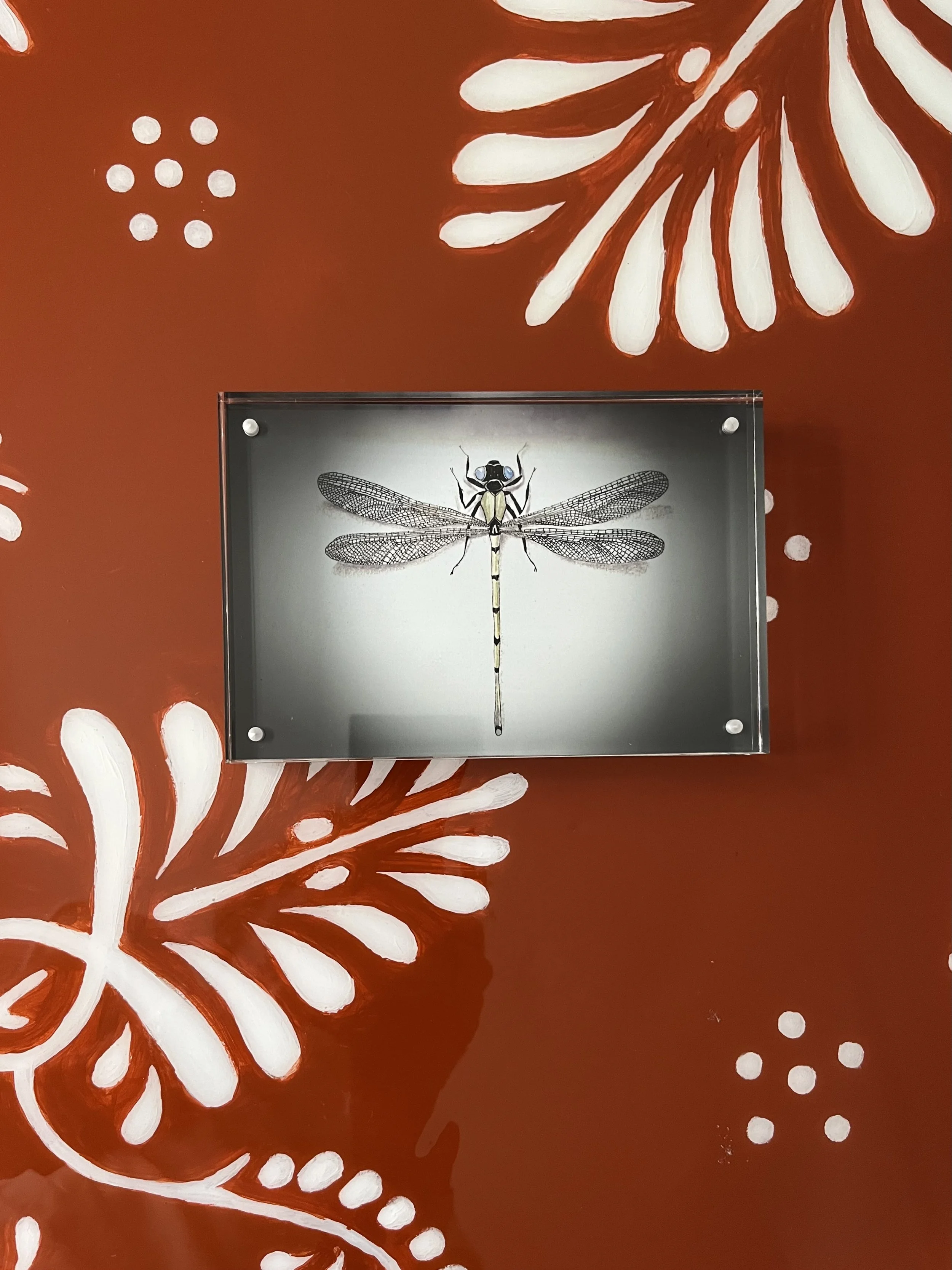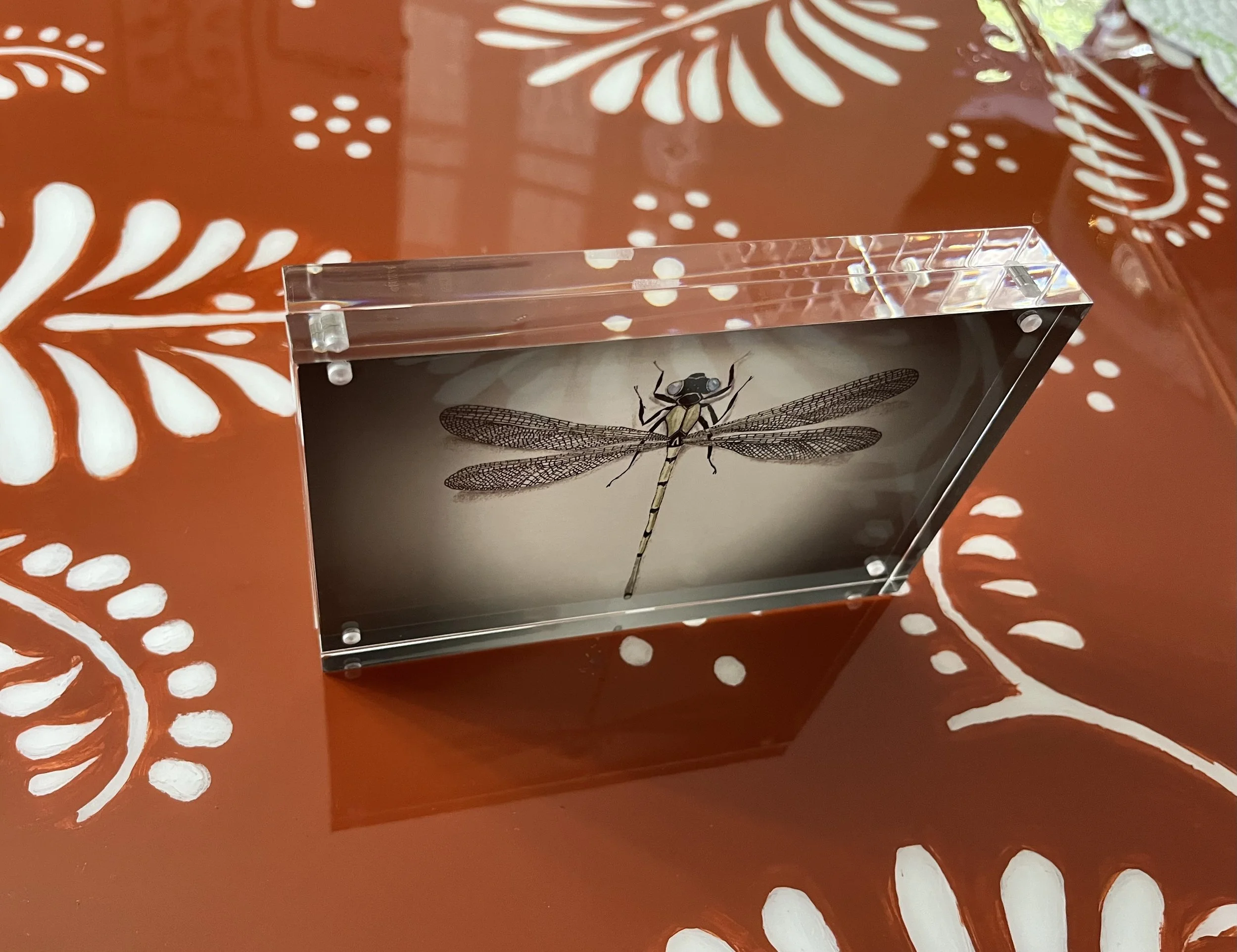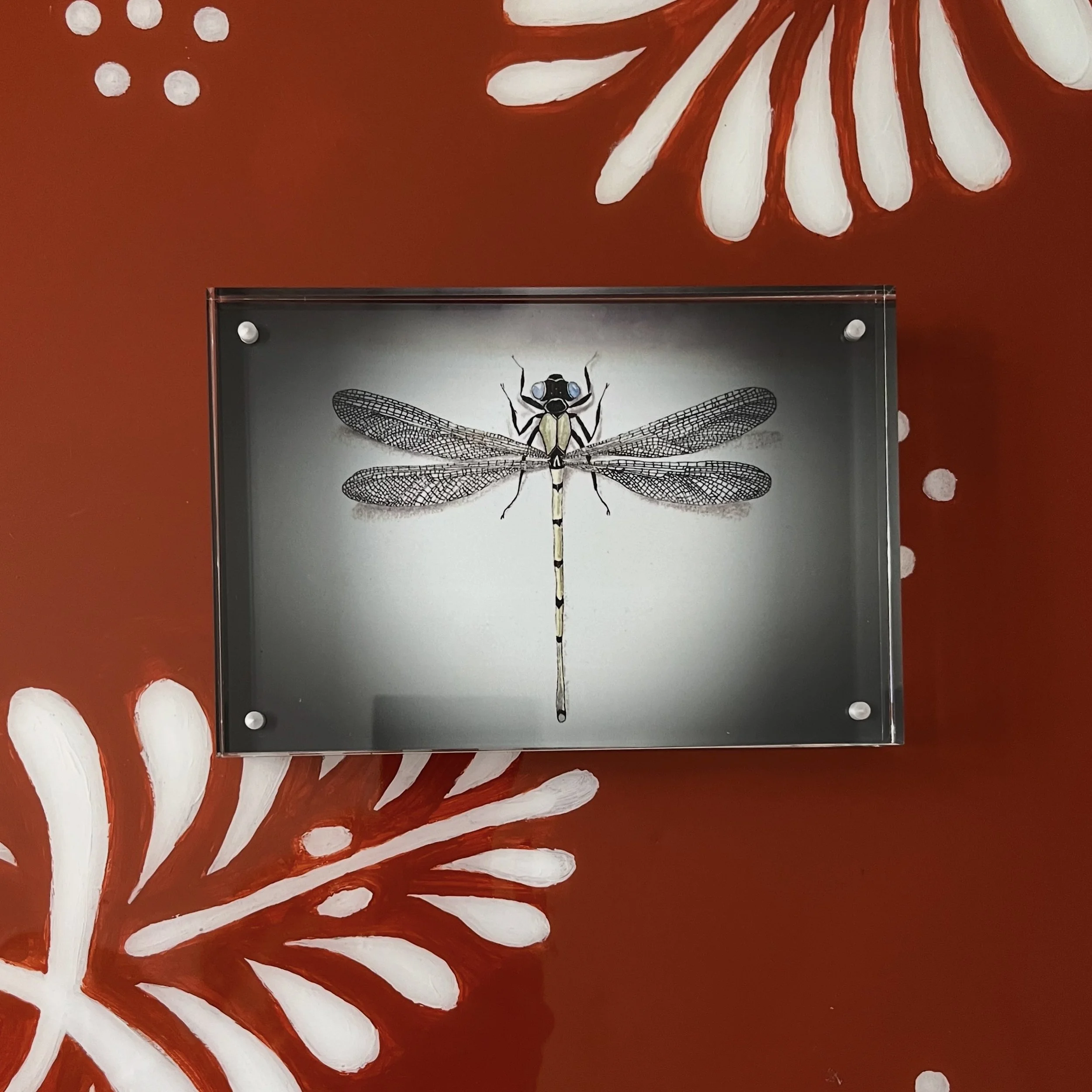 Image 1 of 5
Image 1 of 5

 Image 2 of 5
Image 2 of 5

 Image 3 of 5
Image 3 of 5

 Image 4 of 5
Image 4 of 5

 Image 5 of 5
Image 5 of 5






Specimen No. 37. The Sleep Glider Damselfly
Specimen No. 37
Name: The Sleep Glider | Zygoptera lucivaga
Collected By: Sister Emilienne du Lune, hospice nurse and amateur entonologist
Date of Discovery: 1891
Locality: Capel gardens of Saint-Auréle-sur-Mer, Brittany, France
Catalog No. FD - 20 - 37
Pinned delicately in flight, this slender-bodied dragonfly bears the rare distinction of being both a documented species and a whispered legend across several generations of European caregivers. Zygoptera lucivaga, known affectionately as the Sleep Glider damselfly, is pale ivory along the abdomen, interrupted by soft coal bands like the echoes of bars on a nursery window. Its diaphanous wings are so lightly smoked at their base they seem to hover in a state of near-disappearance. Each vein glints faintly gold under moonlight, according to several accounts, though no scientific study has successfully confirmed the bioluminescence.
Its thorax is a washed green-ochre, and the wide-set, luminous blue eyes—like marbles filled with dusk—give this dragonfly an oddly sentient expression when observed under magnification. Those who have observed it at night swear the eyes seem to shift slightly in changing light.
What truly separates the Sleep Glider from its kin is neither its structure nor pigmentation, but its unusual behavior and lore. First described in the diaries of Sister Emilienne, it was noted to hover motionless for hours near the beds of sleeping children. Unlike most Odonata, who are fiercely diurnal, Z. lucivaga is most active between dusk and the early hours of dawn. According to Sister Emilienne, this dragonfly “keeps watch against shadows that move where no light falls.”
Indeed, over the decades, nurses in France, Poland, and parts of the Scottish Highlands have reported these dragonflies present in children’s wards or at the windows of orphanages—always silent, always still. In Polish folklore, it is known as Nocny Stróżek (The Night Sentry), and in Highland tales, The Lightkeeper—a spirit-insect believed to settle the minds of fretful young.
Entomologists of the early 20th century dismissed such reports as comforting myths spun by those who spent long nights beside the ill and orphaned. Yet the species exists, and it does not appear in habitats where one might expect a dragonfly—no ponds, no streams. It has only ever been documented near bedrooms and window ledges of private homes.
Regardless of its source, those who have slept under its vigil report the same thing: the absence of nightmares, and the presence of an inexplicable calm upon waking. While unconfirmed, this damselfly is believed to discourage disturbances beneath the bed or closet interior—shadows, noises, or imagined figures —reported by children.
Mounted here with reverence, the Sleep Glider remains one of the most quietly contested and beloved entries in the Fly Design Lab. It is best kept near the bedside—just in case.
Note: High quality archival glicée print on acid-free paper, a method that creates fine art reproductions with exceptional color accuracy and longevity. Pigments-based inks are designed to resist fading and discoloration and capture the finest details and subtle color variations with great precision.
Housed in a 4×6” crystal-clear acrylic specimen block, its 1” depth allows freestanding display. Each piece is designed to exhibit on desk or shelf.
Fly Design uses a practice known as entonology — the study of fictitious insects — to reimagine the natural world through scientific storytelling and poetic design.
Specimen No. 37
Name: The Sleep Glider | Zygoptera lucivaga
Collected By: Sister Emilienne du Lune, hospice nurse and amateur entonologist
Date of Discovery: 1891
Locality: Capel gardens of Saint-Auréle-sur-Mer, Brittany, France
Catalog No. FD - 20 - 37
Pinned delicately in flight, this slender-bodied dragonfly bears the rare distinction of being both a documented species and a whispered legend across several generations of European caregivers. Zygoptera lucivaga, known affectionately as the Sleep Glider damselfly, is pale ivory along the abdomen, interrupted by soft coal bands like the echoes of bars on a nursery window. Its diaphanous wings are so lightly smoked at their base they seem to hover in a state of near-disappearance. Each vein glints faintly gold under moonlight, according to several accounts, though no scientific study has successfully confirmed the bioluminescence.
Its thorax is a washed green-ochre, and the wide-set, luminous blue eyes—like marbles filled with dusk—give this dragonfly an oddly sentient expression when observed under magnification. Those who have observed it at night swear the eyes seem to shift slightly in changing light.
What truly separates the Sleep Glider from its kin is neither its structure nor pigmentation, but its unusual behavior and lore. First described in the diaries of Sister Emilienne, it was noted to hover motionless for hours near the beds of sleeping children. Unlike most Odonata, who are fiercely diurnal, Z. lucivaga is most active between dusk and the early hours of dawn. According to Sister Emilienne, this dragonfly “keeps watch against shadows that move where no light falls.”
Indeed, over the decades, nurses in France, Poland, and parts of the Scottish Highlands have reported these dragonflies present in children’s wards or at the windows of orphanages—always silent, always still. In Polish folklore, it is known as Nocny Stróżek (The Night Sentry), and in Highland tales, The Lightkeeper—a spirit-insect believed to settle the minds of fretful young.
Entomologists of the early 20th century dismissed such reports as comforting myths spun by those who spent long nights beside the ill and orphaned. Yet the species exists, and it does not appear in habitats where one might expect a dragonfly—no ponds, no streams. It has only ever been documented near bedrooms and window ledges of private homes.
Regardless of its source, those who have slept under its vigil report the same thing: the absence of nightmares, and the presence of an inexplicable calm upon waking. While unconfirmed, this damselfly is believed to discourage disturbances beneath the bed or closet interior—shadows, noises, or imagined figures —reported by children.
Mounted here with reverence, the Sleep Glider remains one of the most quietly contested and beloved entries in the Fly Design Lab. It is best kept near the bedside—just in case.
Note: High quality archival glicée print on acid-free paper, a method that creates fine art reproductions with exceptional color accuracy and longevity. Pigments-based inks are designed to resist fading and discoloration and capture the finest details and subtle color variations with great precision.
Housed in a 4×6” crystal-clear acrylic specimen block, its 1” depth allows freestanding display. Each piece is designed to exhibit on desk or shelf.
Fly Design uses a practice known as entonology — the study of fictitious insects — to reimagine the natural world through scientific storytelling and poetic design.